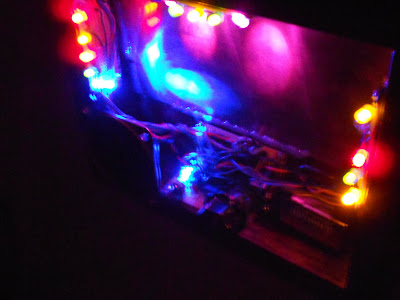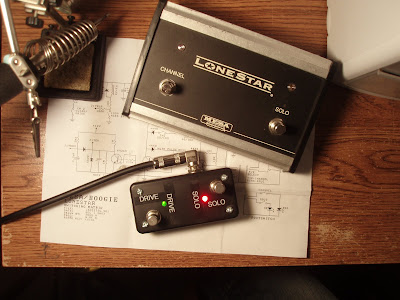Well it's time I made a noisy toy for my sister. It's her 30th birthday! So here's something fun that she will love -- and her cat will probably hate. Like a Thingamagoop, The Idiot Box is equipped with light sensors that control the sound output and light generators the "musician" can use to affect the sensors. The whole package is wrapped up nicely in a hand-carved wooden tarot card box, imported from the far-off land of eBay.
The brain is a few square-wave oscillators around a 40106B schmitt trigger IC. Two oscillators play the two notes you hear, one controls the rhythm, and the rest control the blinking lights. You can cover the corners of the box with your hand to reflect the light from the blinking LEDs back on to the light sensors, and make crazy combinations of noise. I used a similar circuit on Mike's Circuit-Bent Quellotone.



















